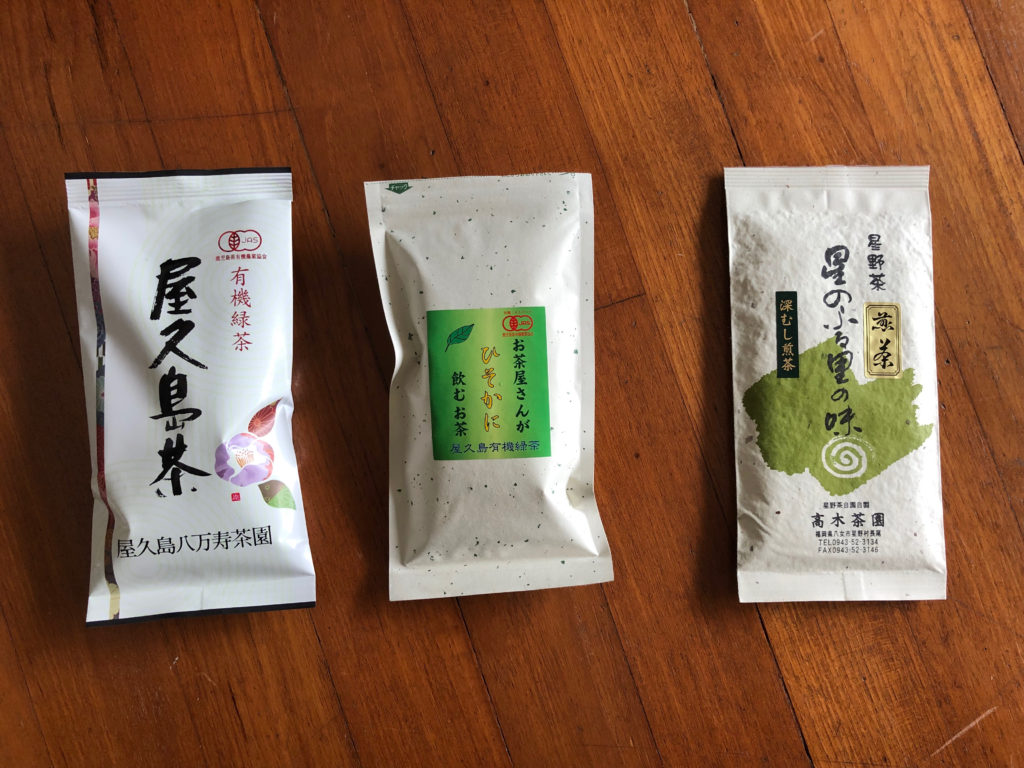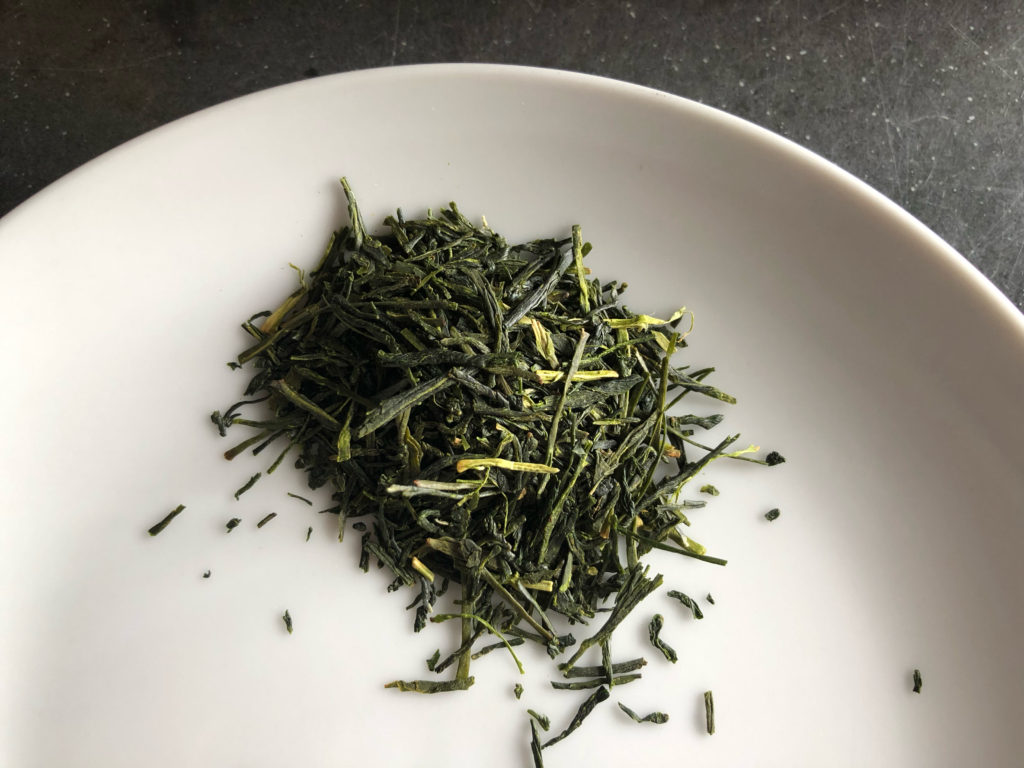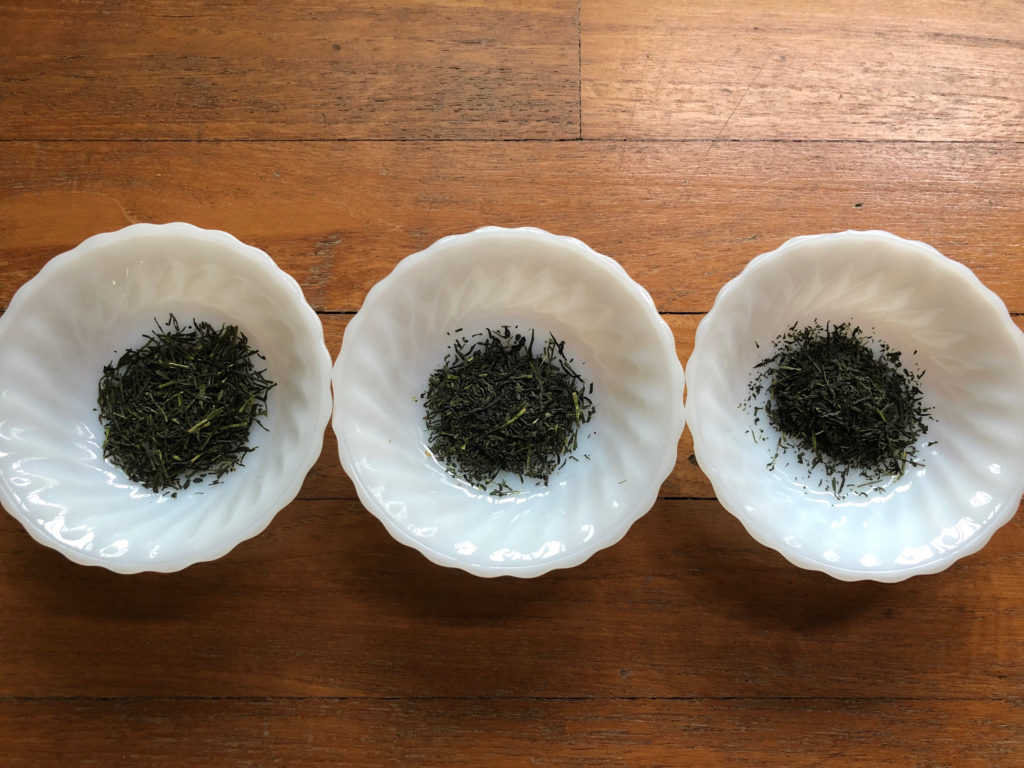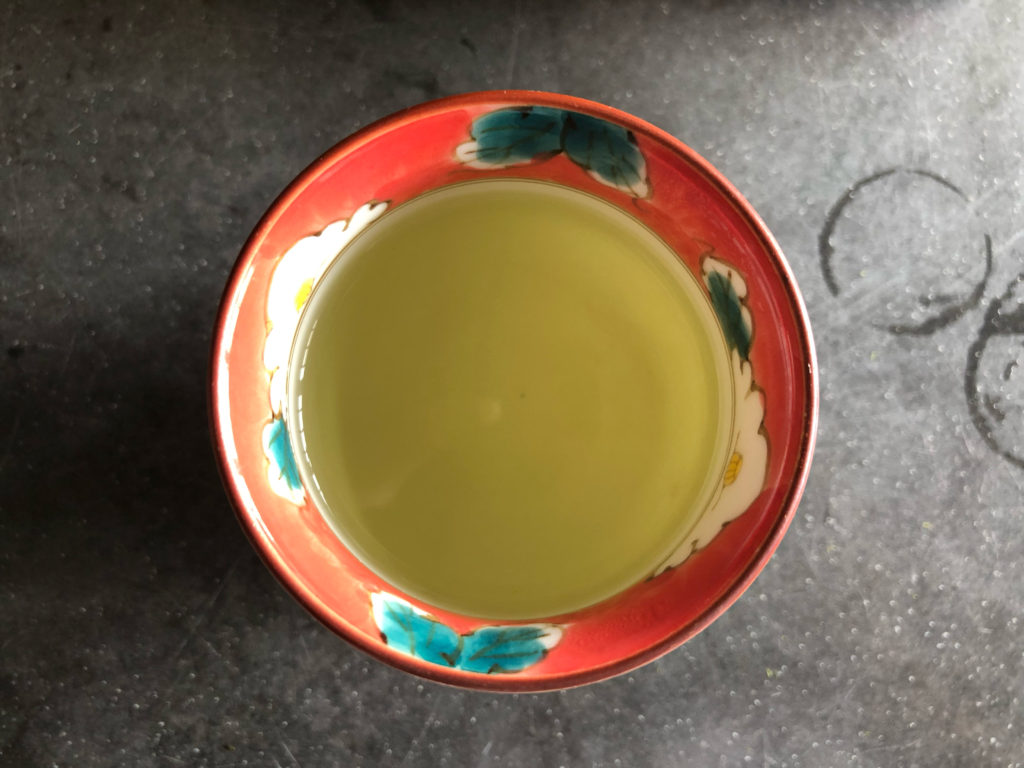I mentioned in my Hachimanjyu Tea Farm visit post that I didn’t get to buy tea made only from the kuritawase cultivar. It’s a pity that I couldn’t try it, but on the other hand, I did manage to get my hands on single-cultivar green teas. Three of them, in fact.

Two of the teas – the Yabukita and the Yutakamidori – are from Hachimanjyu Tea, while the third tea – Kanamidori – is from Takagi Tea in Yame, Fukuoka. Ideally, I’d like everything to be from the same farm so that any differences will not be from the terroir or processing method, but I suppose this is as good as I can get it for now.
Also, you’ll see why this is Part 1 by the end.
How I Compared the Teas
I tried my best to keep things the same: brewing method, water temperature, etc. I made the teas as quickly as possible and drank them as quickly as possible. That said, there was some temperature difference because I was making them by myself but wanted to have all three cups ready when I drank it – because I am that bad at finding small differences.
First Impressions: Dry Leaf
Tea 1: Yabukita

The leaves are mostly dark green but with some light green stalks. It smells so good – the word that comes to mind is umami. There’s a savouriness that I don’t get from my Liu An or other Chinese green teas that I’ve tried.
Tea 2: Yutakamidori

Not going to lie, the leaves of the Yutakamidori look the same as the Yabukita to me. If I stare at the leaves for a very long time, it feels like the Yabukita has a bit of a yellow/warm tinge in comparison, but I also think that it might because I’ve been staring and trying too hard to find a difference. In terms of smell, the umami note isn’t as intense and I get some sweetness as well.
Tea 3: Kanayamidori

Is it just me or is this Kamayamidori the darkest of the three? It might be because there are less light-green stalks, but I get this impression of deeper, richer green as well. The dry leaf of this one had the weakest umami note and strongest sweet note out of the three.
Now that you’ve seen all three teas, do you think you can identify them? I’ve got them lined up in a photo and I’ll give you the answers at the end of the post:

First Impressions: Taste Test
Tea 1: Yabukita

The liquor is a light yellow-green and it tastes like it smells. It’s vegetal and umami with a hint of bitterness. There’s also a nice viscosity, especially when it cools down – I really got what Kenny meant when he viscosity is determined by the amount of organic compounds in the tea.
Tea 2: Yutakamidori

I don’t know why but I thought of bitter vegetables when I drank this! The bitterness isn’t very strong but it’s definitely more distinct here (again, especially when the tea cools down) – especially around the front and sides of the tongue. The bitter note adds depth to this tea.
Tea 3: Kanayamidori

When I drank this, I got a roasted note, which is weird because it’s a fukamushi sencha. I’m not sure why either, but I don’t think I burnt the tea. At any rate, the umami note here is not as strong as the other two (although still stronger than Chinese teas) and the sweetness is a bit more distinct as well.
Conclusions + Future Plans
What this experiment showed me is that while I consider myself more familiar with Japanese green teas compared to Chinese teas, my tastebuds still aren’t developed enough to clearly differentiate between cultivars. I did give the tea to my family, but they couldn’t find any difference – it did make me wonder if I was overthinking things.
I’d like to try and change it. I found this Green Tea Starter Guide by Oh, How Civilised, and I really like devote one week to one green tea and only drink that. I normally mix up my teas but I can see the advantage of added exposures – it might make the differences between the teas easier. So I’ll be finding three weeks to really get to know these three teas, and at the end of it, I’ll come back and do another round of comparison. Fingers crossed that my tastebuds will have developed a bit more!
(I’ve not decided if I should also do individual deep-dive posts for each cultivar, or if I should just do a second comparison but I’ll cross that bridge when I come to it)
Links + Answers

If you tried to guess which tea was which just now, the answers are (from left to right): Yabukita, Yutakamidori, Kanayamidori
